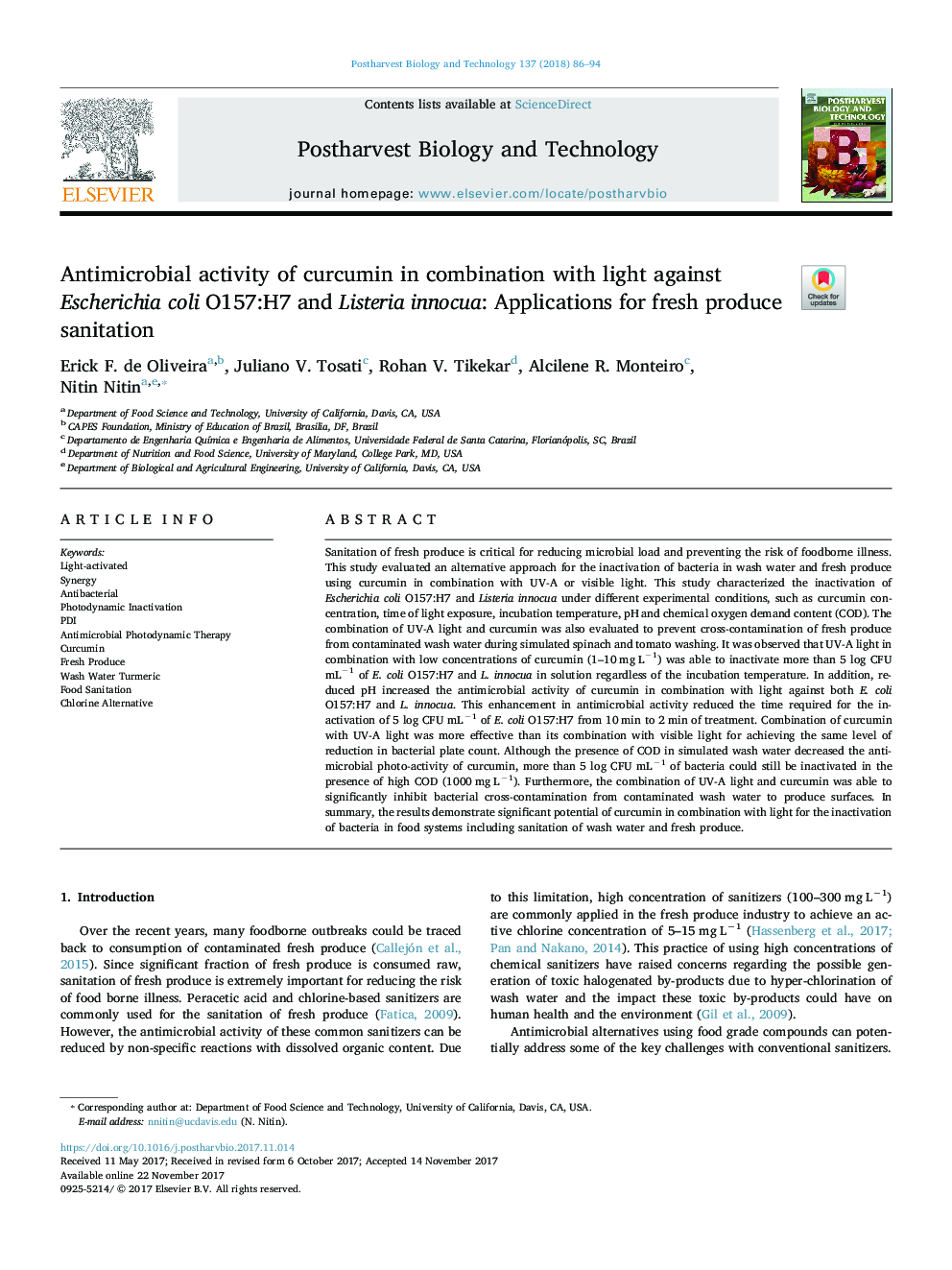| Article ID | Journal | Published Year | Pages | File Type |
|---|---|---|---|---|
| 8882022 | Postharvest Biology and Technology | 2018 | 9 Pages |
Abstract
Sanitation of fresh produce is critical for reducing microbial load and preventing the risk of foodborne illness. This study evaluated an alternative approach for the inactivation of bacteria in wash water and fresh produce using curcumin in combination with UV-A or visible light. This study characterized the inactivation of Escherichia coli O157:H7 and Listeria innocua under different experimental conditions, such as curcumin concentration, time of light exposure, incubation temperature, pH and chemical oxygen demand content (COD). The combination of UV-A light and curcumin was also evaluated to prevent cross-contamination of fresh produce from contaminated wash water during simulated spinach and tomato washing. It was observed that UV-A light in combination with low concentrations of curcumin (1-10 mg Lâ1) was able to inactivate more than 5 log CFU mLâ1 of E. coli O157:H7 and L. innocua in solution regardless of the incubation temperature. In addition, reduced pH increased the antimicrobial activity of curcumin in combination with light against both E. coli O157:H7 and L. innocua. This enhancement in antimicrobial activity reduced the time required for the inactivation of 5 log CFU mLâ1 of E. coli O157:H7 from 10 min to 2 min of treatment. Combination of curcumin with UV-A light was more effective than its combination with visible light for achieving the same level of reduction in bacterial plate count. Although the presence of COD in simulated wash water decreased the antimicrobial photo-activity of curcumin, more than 5 log CFU mLâ1 of bacteria could still be inactivated in the presence of high COD (1000 mg Lâ1). Furthermore, the combination of UV-A light and curcumin was able to significantly inhibit bacterial cross-contamination from contaminated wash water to produce surfaces. In summary, the results demonstrate significant potential of curcumin in combination with light for the inactivation of bacteria in food systems including sanitation of wash water and fresh produce.
Keywords
Related Topics
Life Sciences
Agricultural and Biological Sciences
Agronomy and Crop Science
Authors
Erick F. de Oliveira, Juliano V. Tosati, Rohan V. Tikekar, Alcilene R. Monteiro, Nitin Nitin,
